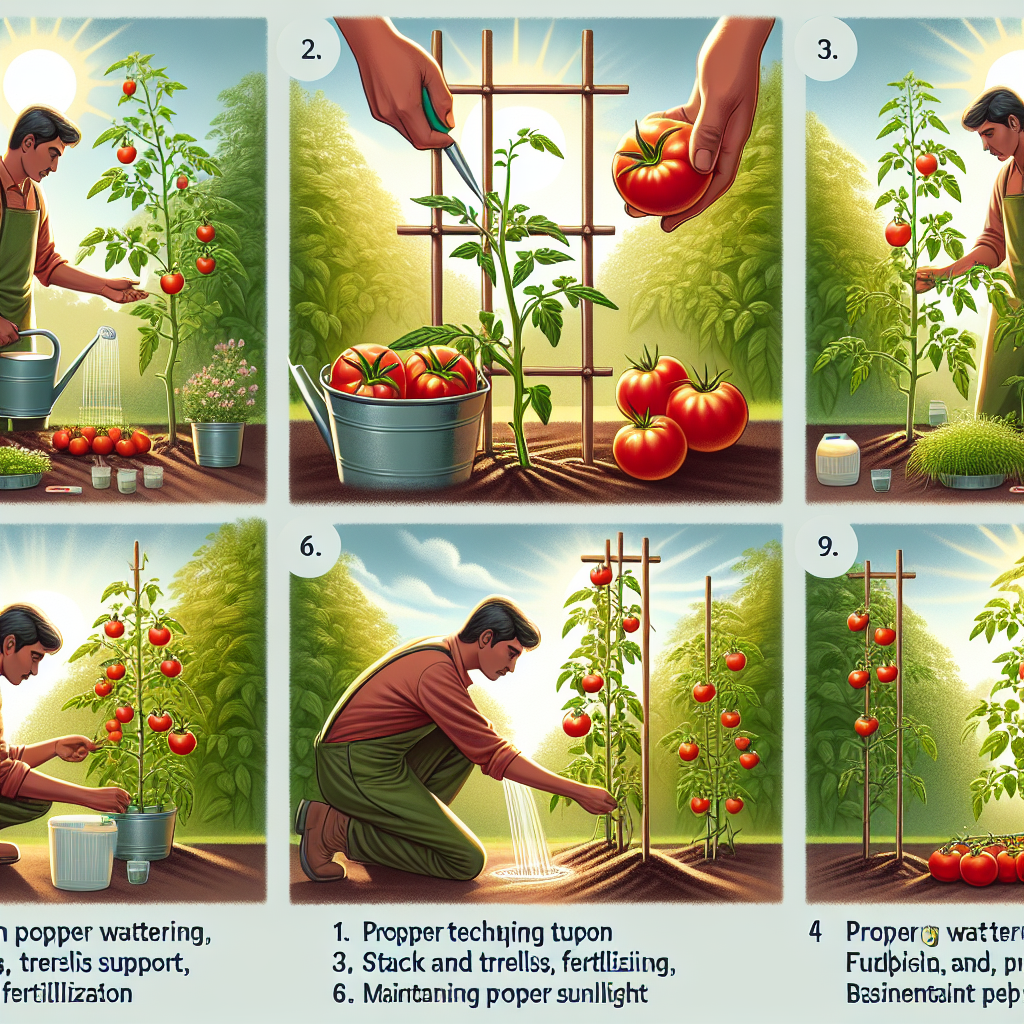
How to get more tomatoes from your plants
How to Maximize Tomato Yield: Tips and Techniques
Growing tomatoes at home is a rewarding endeavor—but how can you achieve the best yield from your plants? Many gardeners seek ways to enhance their harvests, eager for that perfect crop of juicy, plump tomatoes. In this comprehensive guide, we will explore effective strategies to help you achieve exactly that. From selecting the right variety to optimizing soil conditions, let’s uncover the secrets to getting more tomatoes!
1. Choose the Right Tomato Variety
One of the first steps in ensuring a bountiful tomato harvest is to choose the right variety. Different types of tomatoes have varying growth habits, sizes, and yields. Here are some popular categories of tomatoes:
- Determinate Varieties: These plants grow to a certain height and produce fruit all at once. Ideal for canning.
- Indeterminate Varieties: These continue to grow and produce fruit throughout the season, leading to a longer harvest period.
- Hybrid Varieties: Crossbred for specific characteristics, hybrids often yield more and resist diseases better.
When selecting varieties, consider your climate and growing conditions. For example, some tomatoes thrive in cooler temperatures, while others prefer warmth.
2. Start with Healthy Seeds or Seedlings
Choosing healthy seeds or seedlings is vital for a productive outcome. Here are some tips for selecting high-quality plants:
- Inspect for any signs of disease or pests.
- Choose seeds or plants from reputable sources.
- Consider starting seeds indoors to give them a head start.
3. Optimize Soil Conditions
The foundation for any thriving garden is the soil. To get more tomatoes from your plants, ensure that your soil is rich in nutrients and well-draining. Here’s how:
- Test soil pH levels (ideal range is between 6.0 and 6.8).
- Amend the soil with compost to enhance fertility and structure.
- Consider using organic fertilizers to promote healthy growth.
4. Implement Proper Planting Techniques
When planting your tomatoes, consider the following methods:
- Deep Planting: Plant tomato seedlings deeper than their original growing position. This encourages more root development.
- Spacing: Ensure adequate spacing between plants. About 18-24 inches apart is recommended for proper airflow.
- Staking or Caging: Support the plants to keep them upright, which reduces the risk of disease and allows for better fruit exposure to sunlight.
5. Water Wisely
Proper watering is crucial for tomato growth. Use these tips to keep your plants hydrated:
- Water consistently, aiming for 1-2 inches of water per week.
- Water at the base of the plant to avoid wetting the leaves, which can lead to fungal diseases.
- Consider using drip irrigation or soaker hoses for efficiency.
6. Mulching for Moisture Retention
Mulching not only helps retain soil moisture but also suppresses weeds, keeping your plants healthy. Here are some recommended materials:
- Straw or hay
- Grass clippings
- Bark chips or shredded leaves
Apply a layer of mulch about 2-4 inches thick around your tomato plants, ensuring you keep it away from the stems to prevent rot.
7. Fertilization Strategies
For optimal growth and yield, fertilization plays a key role. Utilize both organic and synthetic fertilizers appropriately:
- Use a balanced fertilizer high in potassium and phosphorus, which are essential for fruit production.
- Apply fertilizer during planting and again when fruits start to form.
- Avoid over-fertilization, as this can lead to excessive foliage growth and fewer fruits.
8. Monitor and Manage Pests and Diseases
Healthy plants are less susceptible to pests and diseases. Here are some tactics to keep your tomatoes thriving:
- Regularly inspect plants for pests like aphids, spider mites, and whiteflies.
- Incorporate companion planting to deter harmful insects.
- Use organic pesticides when necessary to treat infestations.
9. Pruning Techniques
Pruning can significantly impact tomato production. Here’s how to prune effectively:
- Remove suckers that grow in the leaf axils; these divert energy from fruit production.
- Trim any dead or yellowing leaves to improve air circulation.
- Consider pruning for shape if you are growing indeterminate varieties.
10. Harvesting at the Right Time
The timing of your harvest can greatly influence the flavor and yield of your tomatoes. Follow these guidelines:
- Harvest tomatoes when they are fully colored and firm to the touch.
- Avoid waiting too long, as overripe tomatoes can attract pests and diseases.
- Pick regularly to encourage further fruit production.
11. Extend Your Growing Season
If you want to maximize your harvest, consider extending your growing season. Here are a few methods:
- Use row covers to protect plants from cold at the beginning and end of the season.
- Invest in a greenhouse or hoop house for optimal protection and growth.
- Plant early-maturing tomato varieties so that you can enjoy an earlier harvest.
12. Conclusion: The Key to Success
By implementing these strategies and paying attention to your plants’ needs, you can learn how to get more tomatoes from your plants. Remember that each growing season presents new challenges and opportunities. Be patient, experiment with different techniques, and keep learning as you cultivate your tomato garden.
"Success in gardening comes from a commitment to learning and adapting your techniques." - Anonymous
In summary, choosing the right variety, maintaining soil health, managing watering and fertilization, and being vigilant about pests will pave the way for a fruitful season. May your tomato plants produce bountifully, and your garden be a reflection of your hard work and dedication!
By Guest, Published on September 22nd, 2024